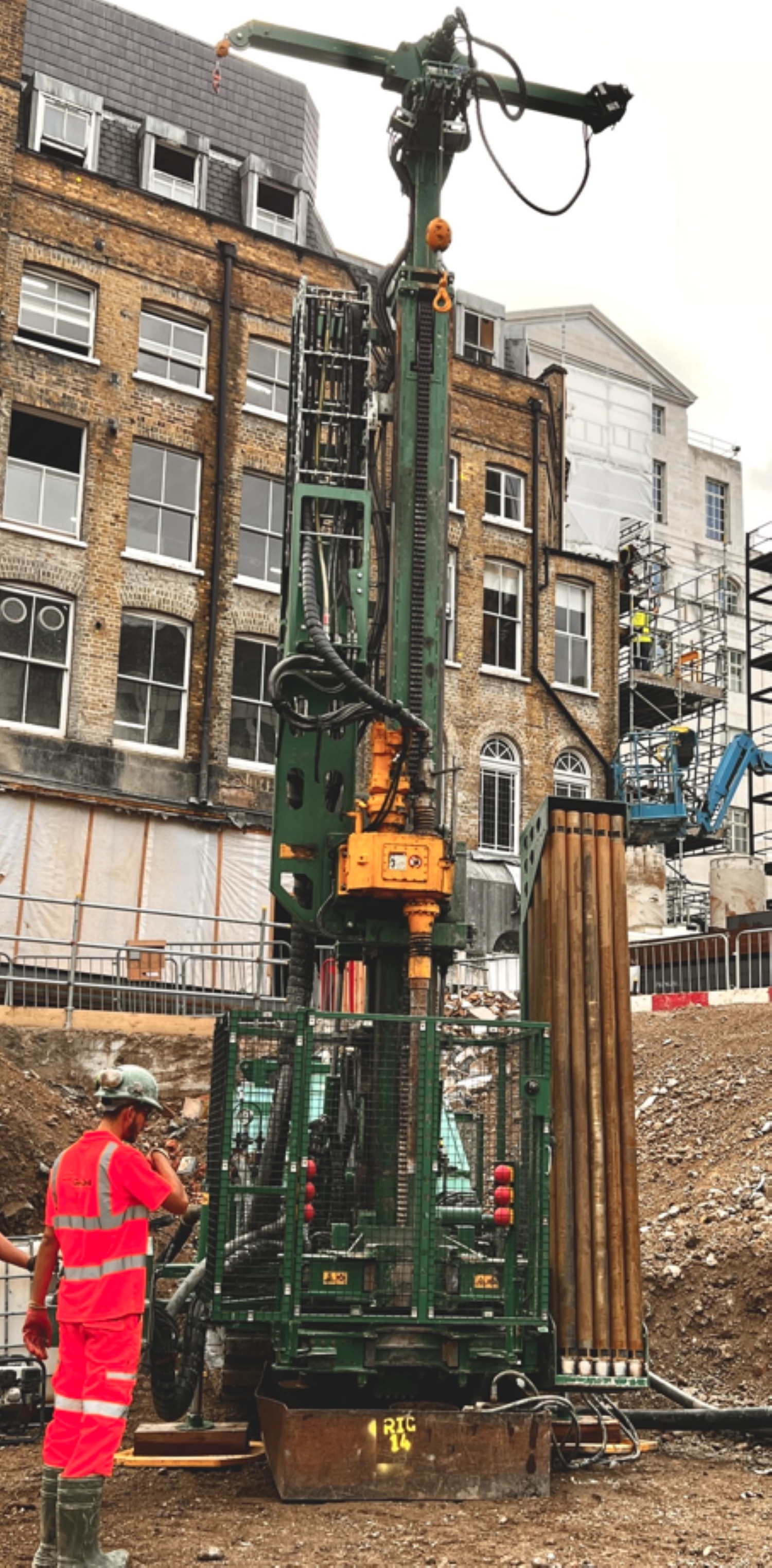Sixty 240-metre-deep boreholes to be dug under London for new heat pumps
The boreholes will be some of the deepest ever dug in the City of London and are part of a £300 million development to add a geothermal heat source to the Square Mile

Some of the deepest boreholes in London are set to be drilled underneath the city to install ground source heat pumps.
The plans include sixty 240-metre-deep boreholes, which will form a closed-loop system, as part of a £300 million development of Salisbury Square. The hope is that this will power a new civic hub for the Square Mile.
The ground source heat pump development will quite literally be ground-breaking in terms of adding renewable heating systems to the city.
Some of the deepest ever to be constructed in London
The geothermal, closed-loop, borehole system will generate heat from consistent temperatures found deep underground. To do this, the boreholes will need to be 240-metres deep — the deepest to be found in the city of London.
The Salisbury Square Development project will be the Square Mile's first use of a standalone borehole heating system. The main contractor digging the boreholes and installing the ground source heat pumps will be specialist engineering firm Mace.
City of London Corporation policy chairman Chris Hayward, who is overseeing the project, said: “This is a significant milestone for the Salisbury Square Development. The completion of the first geothermal borehole is a major step forward in our plans to create a sustainable and low-carbon development.
“We are committed to using innovative technologies to reduce our carbon emissions, reach our net zero 2040 target and create a more sustainable London.”
Get the Homebuilding & Renovating Newsletter
Bring your dream home to life with expert advice, how to guides and design inspiration. Sign up for our newsletter and get two free tickets to a Homebuilding & Renovating Show near you.

What will the ground source heat pumps heat?
The heat will be used within the Salisbury Square Development, which will include a new courthouse — to combine all the City of London's courts into one building — as well as a new police headquarters.
The scheme is set to generate approximately 150 job opportunities in the construction sector, contributing around £10 million Gross Value Added (GVA) annually to the economy. The development will be 45,785m2 and next to Fleet Street, with it expected to be completed by 2026.
Mace project director Jeremy Eavis said: "We are pleased to be supporting the City of London in delivering their high sustainability ambitions for the Salisbury Square development through embracing innovation.
“This network of 60 250m deep geothermal boreholes is the starting point for the ground-breaking installation of a closed loop system ground source heat pump in the City of London. This will mean the Salisbury Square Development will be off the gas grid, dramatically reducing its operational carbon.”
What is a 'closed-loop system' on a ground source heat pump?
A ground source heat pump works by pumping water and anti-freeze around an array of underground pipes, which absorbs heat that is stored in the ground.
The heat pump itself uses compression and expansion like a fridge to extract and amplify that heat to make it useful inside a house.
"The amount of heat that can be collected will be dictated by the soil conditions – for example, clay holds more heat than sand – and the amount of unshaded land available," Homebuilding & Renovating's expert Tim Pullen adds.
Meanwhile a spokesperson for Mace gave Homebuilding & Renovating a little more detail on a closed-loop system: "A closed-loop geothermal heating system involves a water mixture being continuously circulated through pipes, which are buried underground. The fluid in the pipes will return at the same consistent ground temperature allowing the heat pumps to cool & heat the building.
"In the case of the system being installed at the Salisbury Square Development, there is no need for gas as all the heating will come from geothermal means."
If you are considering installing your own ground source heat pump it is also worth looking at our guide on 'how much space does a ground source heat pump need?' before looking at your options.

News Editor Joseph has previously written for Today’s Media and Chambers & Partners, focusing on news for conveyancers and industry professionals. Joseph has just started his own self build project, building his own home on his family’s farm with planning permission for a timber frame, three-bedroom house in a one-acre field. The foundation work has already begun and he hopes to have the home built in the next year. Prior to this he renovated his family's home as well as doing several DIY projects, including installing a shower, building sheds, and livestock fences and shelters for the farm’s animals. Outside of homebuilding, Joseph loves rugby and has written for Rugby World, the world’s largest rugby magazine.
